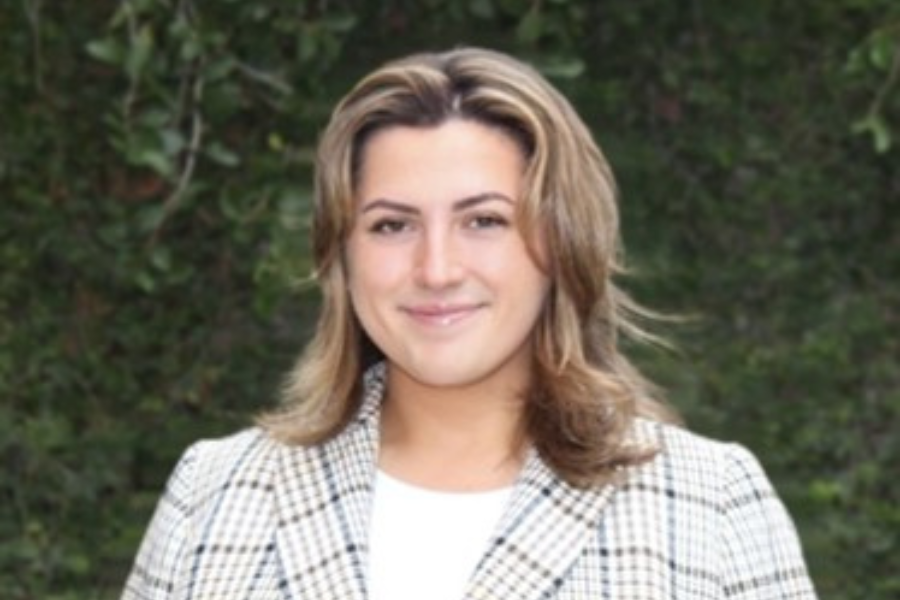Ashley Arcidiacono

”Exploration guided by creativity”
College: Arts and Sciences
Degree Program: Chemistry
Degree: Doctoral
Why FSU?
Prof. Ken Hanson came to speak at my alma mater, Villanova University, and explained the exciting work taking place in the FSU Department of Chemistry and Biochemistry. As a budding molecular spectroscopist (i.e., someone who uses light to investigate the behavior of molecules), I was drawn to FSU's rich history in the field of photochemistry, with giants like Prof. Michael Kasha and Prof. Jack Saltiel hailing from FSU. When I visited, I thought the combination of top-of-the-line instrumentation and ground-breaking research being conducted would make for an excellent environment for me to explore the topics of chemistry that intrigued me.
Motivation to pursue a graduate degree
Ever since I was young, I have always found myself drawn to the "why" of phenomena. This interest led to a natural progression toward the physical sciences that aim to investigate the world around us. Over time my broad interest in science began to focus more on chemistry because I really enjoyed viewing and understanding the natural world through the lens of atoms. After my undergraduate studies and research, I was excited to expand my knowledge and delve into research at a graduate level.
Importance and/or impact of research and work
Over millions of years, nature has generated optimized structures that are very efficient at absorbing light and using that energy to make complex structures. For instance, the green pigment in leaves, chlorophyll, is arranged in such a way that they absorb light energy and funnel it to a reaction center for the formation of chemical bonds (i.e., photosynthesis). One of our goals, both in our lab and globally, is to exert the same control over molecular structure/orientation to increase the efficiency of energy and electron events in human-targeted applications. My work aims to understand and control the structure and orientation of molecules bound to inorganic surfaces. The ability to manipulate these structures, and consequently their properties, has far reaching implications for advancements in solar energy conversion, chemical sensing, targeted drug delivery, and more.
Career aspirations
My goal is to serve as a PI in academia. My hope is that as a PI, I can not only advance our understanding of molecular systems for control over light-matter interactions, but also mentor and inspire a new generation of chemists. I also hope to encourage the dissemination of science to the public in fun, exciting, and accessible ways.
Advice for anyone considering graduate school
Graduate school will be difficult--hours are long, experiments will fail, you may be far from family--but it is almost always worth it. There's no greater place to explore new ideas and be free in your academic pursuits. One of the best parts of graduate school will be the people you meet (both professors and graduate students) who will inspire you along your academic journey and help you answer the questions that puzzle you the most.
Accomplishments during graduate career
I am proud to have received those awards and fellowships:
- FSU Graduate Student Research and Creativity Award (2023),
- FSU Phillip Schlenoff Excellence Award for Graduate Student Travel (2022)
- FSU Outstanding Teaching Assistant Nominee (2022 ),
- FSU Cheryl & Joel Rosenfield Travel Award (2021),
- DoD SMART Semi-Finalist (2021),
- FSU Richard L. Wilder Endowed Scholarship (2020),
- ACS Graduate Student Symposium Planning Committee, Committee Chair (2020-2022),
- NSF Graduate Research Fellowship Honorable Mention (2019),
- FSU Hoffman Summer Research Fellowship (2018)
Besides those scholarships and awards, I have had the unique opportunity to lead a group of fellow chemistry graduate students in hosting a symposium at the American Chemical Society national meeting. We chose to celebrate 101 years of Prof. Michael Kasha--a previous FSU professor who was instrumental in establishing the field of photochemistry and was a beacon of interdisciplinary research.

